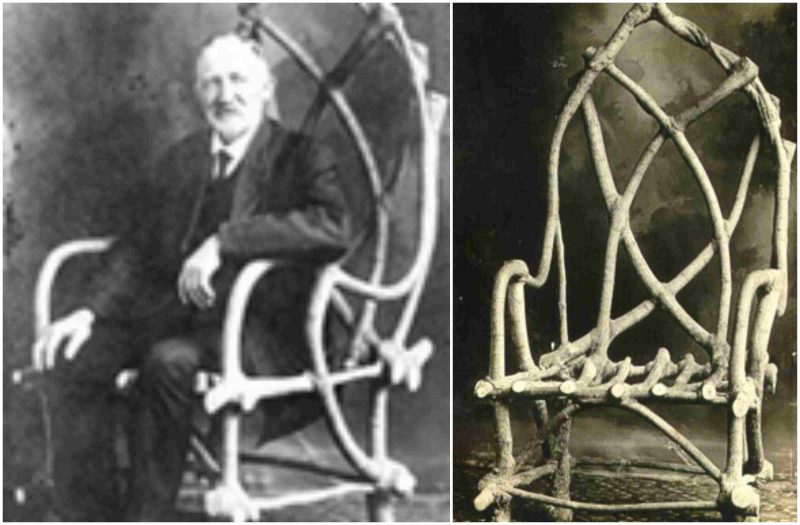Naturally, a handmade wooden chair is much more valuable than one that is mass produced; the craftsmanship and details of a hand carved chair give a unique identity to that object. But then again, we recently found a particular chair that beats all of the mass produced, handmade, reclaimed, you name it chairs in the world, why is that?- Because it is the first naturally grown chair.
It all begun in 1903, when John Krusbak, a banker and passionate naturalist who landscaped his property long before it became fashionable, invited his good friend Walter Glen to show off some of the beech furniture he made. It’s not that the beech furniture was not good, nor that Walter Glen was bad at giving compliments, but that our handy banker had a more of an obsessive approach to his hobby. So when Mr. Glen called the work fantastic, Krusbak’s answer was ‘Dammit, one of these days I am going to grow a piece of furniture that will be better and stronger than any human hands can build.’
Glen replied, ‘John, that I have got to see!’

Here is how Krubsack explains the process in detail:
“After I had planted 32 trees all box elders, in the spring of 1907, I left them to grow in their new home for a year until they were six feet tall, before beginning the chair. In the spring of 1908 I gradually began the work of training the young and pliable stems to grow gradually in the shape of a chair. Most of this work consisted in bending the stems of these trees and tying and grafting them together so as to grow, if possible with all the joints cemented by nature. This was largely an experiment with me and it was with a great deal of interest that I watched and assisted nature in growing piece of furniture.
The first summer’s growth found all the joints I had made by tying and grafting grown firmly together. Some of the trees I found, however, grew much faster than others. To overcome this, I began to cut the stems of those trees that to my notion had grown large enough. This did not kill these trees but simply retarded their growth so as to give the weaker trees a chance to catch up.
In this manner I let these trees grow for seven years. During the last two years I had only four trees growing from the root. These were the four that consisted the legs of the chair and all the other stems kept alive from these four stems because they were grafted to them. After the seventh year all the trees were cut, making in all eleven years from the time the seed was sown until the chair was finally completed.”

The chair, eventually dubbed the “Chair That Grew,” had its first big public showing in a natural history exhibit at the 1915 World’s Fair – the Panama-Pacific International Exposition – held in San Francisco, California. Hugo assisted his father in all aspects of the living chair project and went on to promote it in many ways, including contacting Robert Ripley, who ran it in his “Believe It or Not” column and later filmed John standing beside the chair explaining all about it. The film ran in the weekly newsreels of the time in theaters across the US. The Lloyd Mfg. Co. at the Chicago Furniture Mart subsequently showed the chair during a large trade show for furniture manufacturers. The “Chair That Grew” was displayed on a golden pedestal at the entrance. Krubsack’s chair garnered many offers (one was $5,000) from would-be buyers over the years, but John, and later Hugo, turned them all down. Hugo had no heirs and simply could not bear to see it in the hands of others. He maintained possession of it until he let his nephew Gerhard A. Krubsack buy it for a token amount to use in advertising his furniture business, Noritage Furniture of Embarrass, Wisconsin.
In 1988 the chair was summoned to make another appearance, this time to be sat upon by an actor in the costume of Mickey Mouse at Disney World, in Orlando, Florida, on the occasion of the character’s 60th birthday. Currently, the chair sits inside a special Plexiglas case at the entrance of Noritage Furniture, the furniture manufacturing business now owned by John Krubsack’s descendants; Steve and Dennis Krubsack.
